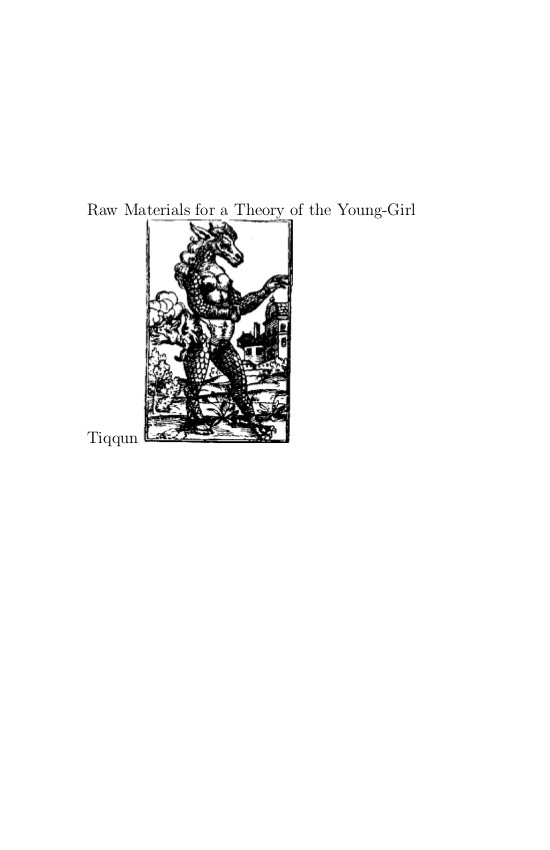Tony D. Sampson: Virality: Contagion Theory in the Age of Networks (2012)
Filed under book | Tags: · affect, assemblage, biology, biopower, capitalism, contagion, memes, memetics, networks, politics, sociology, theory, unconscious, virality, virus

“In this thought-provoking work, Tony D. Sampson presents a contagion theory fit for the age of networks. Unlike memes and microbial contagions, Virality does not restrict itself to biological analogies and medical metaphors. It instead points toward a theory of contagious assemblages, events, and affects. For Sampson, contagion is not necessarily a positive or negative force of encounter; it is how society comes together and relates.
Sampson argues that a biological knowledge of contagion has been universally distributed by way of the rhetoric of fear in the antivirus industry and other popular discourses surrounding network culture. This awareness is also detectable in concerns over too much connectivity, such as problems of global financial crisis and terrorism. Sampson’s “virality” is as established as that of the biological meme and microbe but is not understood through representational thinking expressed in metaphors and analogies. Rather, Sampson interprets contagion theory through the social relationalities first established in Gabriel Tarde’s microsociology and subsequently recognized in Gilles Deleuze’s ontological worldview.
According to Sampson, the reliance on representational thinking to explain the social behavior of networking—including that engaged in by nonhumans such as computers—allows language to overcategorize and limit analysis by imposing identities, oppositions, and resemblances on contagious phenomena. It is the power of these categories that impinges on social and cultural domains. Assemblage theory, on the other hand, is all about relationality and encounter, helping us to understand the viral as a positively sociological event, building from the molecular outward, long before it becomes biological.”
Publisher University of Minnesota Press, 2012
ISBN 0816670056, 9780816670055
235 pages
Review: Jussi Parikka (Theory, Culture & Society)
Book video (University of Amsterdam students)
Author’s research blog
Publisher
PDF, PDF (updated on 2017-9-29)
Comments (2)Tiqqun: Raw Materials for a Theory of the Young-Girl (1999–) [EN, DE]
Filed under book | Tags: · biopolitics, biopower, body, capitalism, consumerism, desire, feminism, labour, love, metaphysics, philosophy, reification, seduction, sexuality, theory

“First published in France in 1999, Preliminary Materials for a Theory of the Young-Girl dissects the impossibility of love under Empire. The Young-Girl is consumer society’s total product and model citizen: whatever “type” of Young-Girl she may embody, whether by whim or concerted performance, she can only seduce by consuming. Filled with the language of French women’s magazines, rooted in Proust’s figure of Albertine and the amusing misery of (teenage) romance in Witold Gombrowicz’s Ferdydurke, and informed by Pierre Klossowski’s notion of “living currency” and libidinal economy, Preliminary Materials for a Theory of the Young-Girl diagnoses — and makes visible — a phenomenon that is so ubiquitous as to have become transparent.
In the years since the book’s first publication in French, the worlds of fashion, shopping, seduction plans, makeover projects, and eating disorders have moved beyond the comparatively tame domain of paper magazines into the perpetual accessibility of Internet culture. Here the Young-Girl can seek her own reflection in corporate universals and social media exchanges of “personalities” within the impersonal realm of the marketplace. Tracing consumer society’s colonization of youth and sexuality through the Young-Girl’s “freedom” (in magazine terms) to do whatever she wants with her body, Tiqqun exposes the rapaciously competitive and psychically ruinous landscape of modern love.” (from Semiotexte, the publisher of the 2012 edition)
Announcement and discussion about the translation
Commentary (Rob Horning, 2012)
More commentaries (compiled by 1000 Little Hammers, 2013)
Originally published in French as Premiers matériaux pour une Théorie de la Jeune-Fille in Tiqqun 1, 1999
Revised, republished by Éditions Mille et une nuits, 2001.
Translator unknown
Published on younggirl.jottit.com, Jan 2010
PDF (2010)
HTML (2010)
HTML (2012 edition, trans. Ariana Reines, Preliminaries + Chapters 6 & 7)
German edition (2009)
Jacques Rancière: Dissensus: On Politics and Aesthetics (2010)
Filed under book | Tags: · aesthetics, art, biopolitics, biopower, democracy, ontology, philosophy, politics, subjectivation

“Dissensus: On Politics and Aesthetics brings together some of Jacques Rancière’s most recent writings on art and politics to show the critical potential of two of his most important concepts: the aesthetics of politics and the politics of aesthetics.
In this fascinating collection, Rancière engages in a radical critique of some of his major contemporaries on questions of art and politics: Gilles Deleuze, Antonio Negri, Giorgio Agamben, Alain Badiou and Jacques Derrida. The essays show how Rancière’s ideas can be used to analyse contemporary trends in both art and politics, including the events surrounding 9/11, war in the contemporary consensual age, and the ethical turn of aesthetics and politics. Rancière elaborates new directions for the concepts of politics and communism, as well as the notion of what a ‘politics of art’ might be.
This important collection includes several essays that have never previously been published in English, as well as a brand new afterword. Together these essays serve as a superb introduction to the work of one of the world’s most influential contemporary thinkers.”
Edited and Translated by Steven Corcoran
Publisher Continuum, London/New York, Jan 2010
ISBN 1847064450, 9781847064455
240 pages
Reviews: Todd May (NDPR), David W. Hill (Marx & Philosophy).
PDF (updated on 2024-2-20)
Comment (0)
